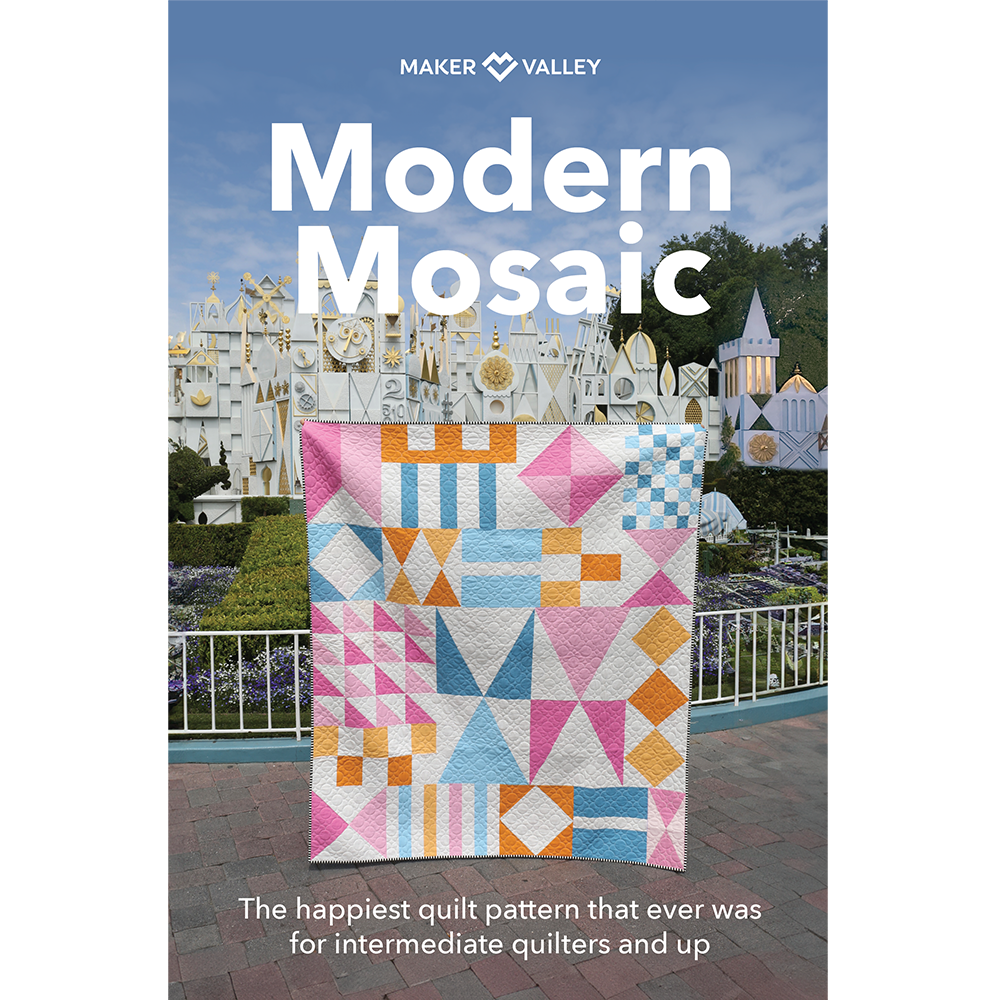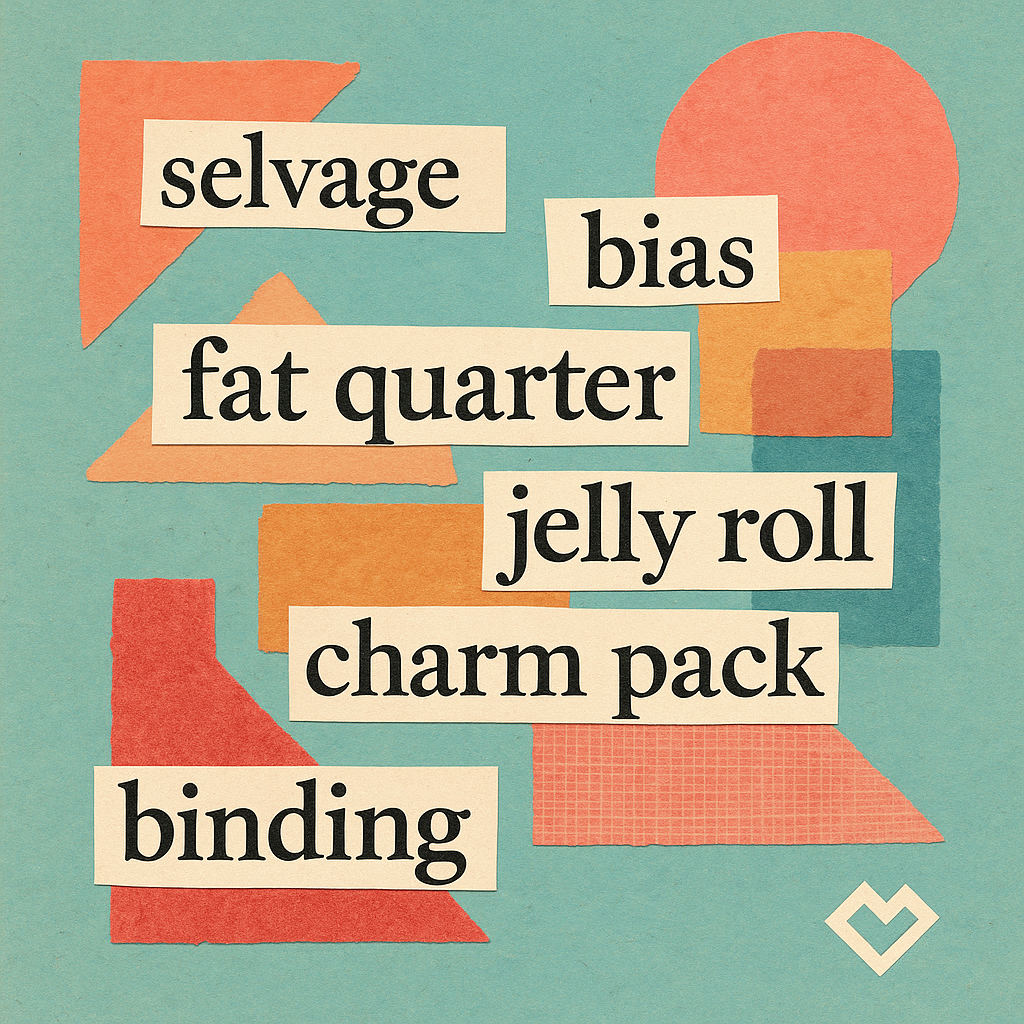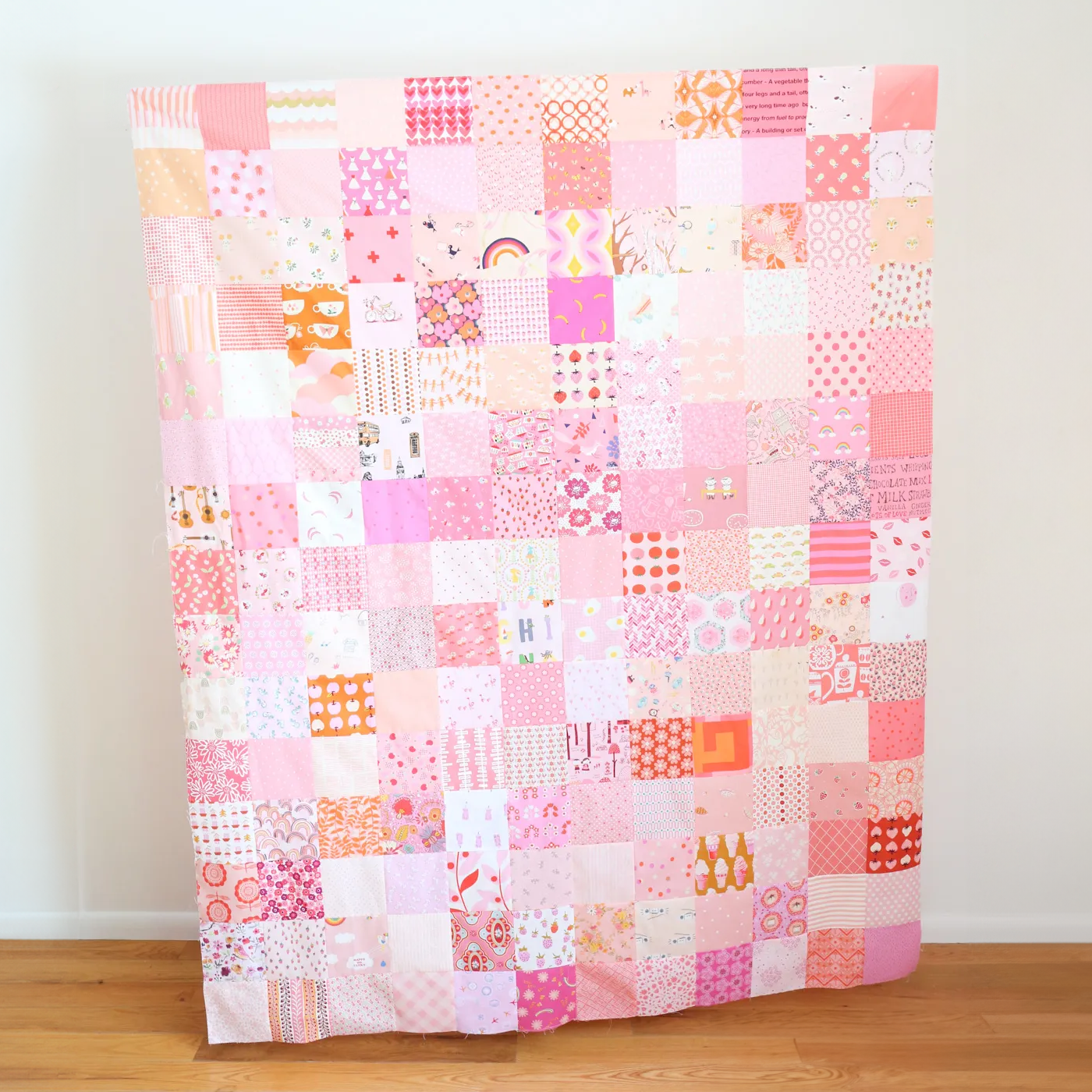Your Friendly, Slightly Sassy Glossary of Quilting Terms
Hello, my quilty friends!
So you’ve caught the quilting bug (welcome!) and now everyone online is tossing around words like “jelly roll” and “HSTs” as if they’re ordering brunch. Fear not. Below is a plain‑English, lightly cheeky guide to the lingo you’ll meet on your way from first stitch to finished quilt. Bookmark it, share it, embroider it on a pillow—whatever keeps you sewing with confidence.
Appliqué - Sewing one fabric shape on top of another. Think stickers, but stitched—not slapped on. Great for adding cute motifs or letters without piecing a thousand tiny bits.
Backing - The fabric that becomes the quilt’s back. It hides your stitches, shows off big prints, and protects the batting from daylight and cookie crumbs.
Basting - Temporarily holding your quilt layers (top, batting, backing) together with pins, spray, or big stitches. It’s the safety‑pins‑and‑duct‑tape phase before real quilting begins.
Batting - The cushy middle layer. Cotton, wool, bamboo—all just fancy words for “cloud sandwich filling.”
Bias - Fabric cut at a 45‑degree angle to the selvage. It stretches like yoga pants—perfect for binding curves, terrible for tug‑of‑war.
Binding - The long strip that wraps the outside edge, sealing everything in like the crust on a PB&J. We often stock yardage perfect for binding in our shop.
Block - One unit of patchwork (e.g., a 9‑patch). Finish one and you’ll feel like a genius—until the pattern says repeat 41 more times.
Bobbin - The little spool that lives under your needle, feeding the underside thread. When it runs out mid‑seam, you’ll learn new vocabulary words.
Border - Strips sewn around the quilt’s outer edge to frame your blocks. Like a picture frame but easier to swap out if you change your mind.
Chain Piecing – Sewing pieces end‑to‑end without snipping the thread. It turns a stack of patches into a festive garland—and shaves hours off your life sentence… er, quilt. Check out our free chain-piecing tutorial.
Cornerstone - A small square that pops between sashing strips at block corners. Functional spacer, secret splash of color.
Design Wall - A large vertical surface (felt board, flannel sheet, or Ikea rug tacked to the wall) where you stick blocks before sewing them together. It’s like a giant, rearrangeable puzzle board that saves you from crawling on the floor—and lets you spot wonky color choices before the seam rip‑a‑thon begins.
Feed Dogs - The jagged metal teeth under your presser foot that pull fabric through the machine. Drop them for free‑motion quilting; otherwise, keep them down for straight stitching.
Fat Eighth (FE) - A fat eighth is half of a fat quarter. It starts the same way (18″ × 22″), then gets cut in half to create a handy 9″ × 22″ piece. It packs the same shape advantages—just in a smaller, stash‑friendly dose ideal for scrappy projects or sampler blocks.
Fat Quarter (FQ) - A fat quarter is a quarter‑yard of fabric cut to maximize usable width: instead of slicing 9″ off the bolt (which would give you a long, skinny 9″ × WOF strip), the shop cuts a half‑yard (18″ × WOF) and then halves it again vertically. The result is an 18″ × 22″ rectangle—roomier, squarer, and perfect for larger pattern pieces or fussy cutting. Check out our fabric bundles to see these in action—instant stash boost.
Grainline - The direction of the fabric’s threads. Sew with the grain for stability, unless you want wavy blocks (hint: you don’t).
Half‑Square Triangle (HST) - Two right‑angle triangles sewn into one square. They’re the LEGO bricks of thousands of quilt designs.
Interfacing - A thin stabilizer you fuse or sew onto fabric to give it extra body. Think of it as fabric caffeine.
Jelly Roll - Forty 2 ½″ × WOF strips rolled tight like a cinnamon bun. Unroll carefully—fabric confetti explosion is real.
Layer Cake - A stack of 10″ squares (usually 42 pieces). Great for quick quilts when “cutting” feels like a four‑letter word.
Low Volume - A low‑volume fabric is a print with a light or subtle background (often white, cream, or pale gray) and a faint design—think whispers, not shouts. These understated fabrics read almost solid from a distance but still add texture up close. Quilters use them as quiet “background singers” in patchwork, letting bolder colors and patterns take center stage while keeping the overall quilt from feeling flat or overly busy.
Needle‑Turn Appliqué - Hand‑stitching technique where you tuck seam allowance under with your needle as you go. Slow, peaceful, and oddly meditative—like gardening but with fewer bugs.
On‑Point - Setting square blocks so they stand on a corner (diamond‑style). Instantly fancier, but you’ll cut weird triangles for the sides.
Patchwork - The art (or obsession) of sewing small fabric pieces together to make a larger design. It’s quilting’s bread‑and‑butter—and a fabulous stash‑buster.
Quilt Sandwich - Top + batting + backing layered in that order. No mayo required—just basting.
Rotary Cutter - Pizza‑wheel‑meets‑scalpel for fabric. Use with a quilting ruler and mat for crisp, straight cuts (and keep fingers clear—ask me how I know).
RST (Right Sides Together) - The golden rule: sew with the pretty sides touching so seams hide inside. Ignore this once and you’ll invent creative swears while seam‑ripping.
Sashing - Strips inserted between blocks to give each block breathing room—like social distancing for patchwork.
Seam Allowance - The fabric strip between your seam and raw edge (¼″ for quilting). Measure it; love it; live by it.
Seam Ripper - Tiny fork of doom—or salvation—used to remove incorrect stitches. Keep one within arm’s reach (or two if caffeine is involved).
Selvage - The factory‑finished fabric edge that doesn’t fray. Trim it off or collect them to make quirky “selvage quilts.”
Snowball Block - A square with its corners “snowballed” using small triangles. Great for showcasing fabric prints—or sneaking in accent colors.
Strip Piecing - Sewing long fabric strips together first, then sub‑cutting into smaller units. It’s batch cooking for quilters.
Template - A reusable shape (acrylic or cardboard) for tracing and cutting identical pieces. Saves brain cells when angles get funky.
Thimble - Finger armor that prevents hand‑stitching from becoming hand‑skewering. Find one that fits and wear it like a crown.
Walking Foot - A presser foot with its own feed dogs that walk fabric layers evenly. Perfect for straight‑line quilting and preventing puckers.
WIP (Work in Progress) - Any quilt started but not finished. Warning: WIPs multiply in dark closets.
WOF (Width of Fabric) - The usable width between selvages (about 42″ for quilting cotton). Every math problem starts here.
Zigzag Stitch - A back‑and‑forth machine stitch used for appliqué, finishing raw edges, or just looking jazzy.
Terminology in Conversation
Imagine chatting at guild night:
“After basting my sandwich I did a little stitch in the ditch, then sent it to a longarmer because my WIP stack is nuts. Now I’m binding with that rainbow Maker Valley bias tape.”
Look at you, practically bilingual!
Why the Jargon Matters
Quilters didn’t invent fancy words to gate‑keep; they invented them to stop typing “that fluffy middle layer” twelve times a day. Once you know the code, patterns read like friendly recipes instead of medical charts.
Quick Field Guide in Action
Picture this: You start with a charm pack, spin up a stack of HSTs, use chain piecing to speed through blocks, sash them with crisp white strips, layer the quilt sandwich, and send everything through your walking foot. Finish with a Maker Valley rainbow binding and—boom—your first quilt! Each term unlocked a step, and none of them were scary, right?
Parting Words
Language shapes confidence. The next time someone asks what you’re making, you can say, “Oh, just chain‑piecing some HSTs from a fat‑quarter pull,” and watch their eyebrows rise in impressed confusion. You’ll know exactly what it means—and now, so do they.
Go forth and speak quilt. May your seams be straight, your bobbins full, and your projects never languish longer than a season (or three).
Happy making,
🩵 Holly






Leave a comment
This site is protected by hCaptcha and the hCaptcha Privacy Policy and Terms of Service apply.